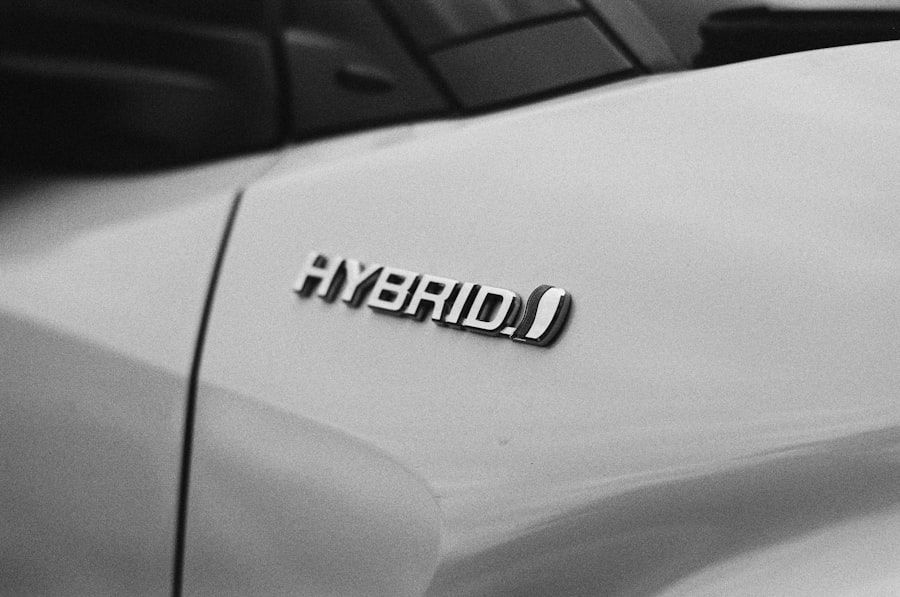
Essential Car Battery Maintenance Tips
Car batteries are essential components of any vehicle, serving as the primary source of electrical energy required to start the engine and power various electrical systems. Most modern vehicles utilize lead-acid batteries, which consist of lead dioxide and sponge lead plates submerged in a sulfuric acid electrolyte solution. This chemical reaction generates the electrical energy needed to crank the engine and operate accessories such as lights, radio, and air conditioning.
Understanding how these batteries function is crucial for any car owner, as it can help in diagnosing issues and maintaining the vehicle’s overall health. The capacity of a car battery is typically measured in ampere-hours (Ah), which indicates how much current a battery can provide over a specific period. For instance, a battery rated at 50 Ah can theoretically deliver 1 amp for 50 hours or 50 amps for 1 hour.
Additionally, the cold cranking amps (CCA) rating is vital, especially in colder climates, as it measures the battery’s ability to start an engine in low temperatures. A higher CCA rating means better performance in frigid conditions. Understanding these specifications can aid in selecting the right battery for your vehicle and ensuring it meets your driving needs.
Key Takeaways
- Car batteries provide the electrical energy needed to start the engine and power the vehicle’s electrical systems.
- Regularly check the battery’s fluid levels to ensure proper functioning and prevent damage.
- Clean the battery terminals to remove corrosion and ensure a strong connection for optimal performance.
- Test the battery’s charge regularly to identify any issues and prevent unexpected breakdowns.
- Replace the battery when necessary to avoid being stranded and maintain the vehicle’s electrical system.
- Use a battery charger to maintain the battery’s charge and extend its lifespan when the vehicle is not in use.
- Store the battery properly in a cool, dry place to prevent damage and prolong its life.
- Seek professional help when needed, especially for complex battery issues or if you are unsure about performing maintenance tasks.
Checking the Battery’s Fluid Levels
Maintaining proper fluid levels in a car battery is crucial for its longevity and performance. Lead-acid batteries contain a liquid electrolyte that facilitates the chemical reactions necessary for generating electricity. Over time, this electrolyte can evaporate due to heat or excessive charging, leading to a condition known as sulfation, where lead sulfate crystals form on the battery plates.
This can significantly reduce the battery’s efficiency and lifespan. Therefore, regular checks of the fluid levels are essential to ensure optimal performance. To check the fluid levels, one must first ensure safety by wearing gloves and goggles, as battery acid can be corrosive.
Most batteries have transparent cases that allow for easy visual inspection of the electrolyte levels. If the fluid is below the recommended level, distilled water should be added to bring it back up to the appropriate mark. It is important to avoid using tap water, as impurities can lead to further complications.
Regularly checking and maintaining fluid levels can prevent premature battery failure and ensure reliable vehicle operation.
Cleaning the Battery Terminals

Battery terminals can accumulate corrosion over time, which can impede the flow of electricity between the battery and the vehicle’s electrical system. Corrosion appears as a white, powdery substance around the terminals and can be caused by a combination of moisture and acid leakage. Cleaning these terminals is a straightforward yet vital maintenance task that can enhance battery performance and prolong its life.
To clean the terminals, one should first disconnect the negative terminal followed by the positive terminal to prevent any short circuits. A mixture of baking soda and water can be used to neutralize the acid and dissolve corrosion. Applying this solution with a brush or cloth will help remove buildup effectively.
After cleaning, it is essential to rinse the terminals with clean water and dry them thoroughly before reconnecting them. Applying a thin layer of petroleum jelly or terminal protector spray after cleaning can help prevent future corrosion, ensuring a solid connection for optimal electrical flow.
Testing the Battery’s Charge
| Testing the Battery’s Charge |
|---|
| 1. Voltage measurement |
| 2. Load testing |
| 3. Specific gravity measurement |
| 4. Conductance testing |
Regularly testing a car battery’s charge is an important aspect of maintenance that helps identify potential issues before they escalate into more significant problems. A fully charged battery typically measures around 12.6 volts or higher when at rest. If the voltage drops below 12.4 volts, it indicates that the battery is partially discharged, while readings below 12 volts suggest that it may be time for a recharge or replacement.
There are several methods to test a car battery’s charge, including using a multimeter or a dedicated battery tester. A multimeter is a versatile tool that can measure voltage, current, and resistance. To test with a multimeter, one must set it to the DC voltage setting and connect the red probe to the positive terminal and the black probe to the negative terminal.
The reading will indicate the state of charge. Alternatively, many auto parts stores offer free battery testing services, where professionals can assess the battery’s health using specialized equipment. Regular testing not only helps in maintaining battery health but also ensures that drivers are not caught off guard by unexpected failures.
Replacing the Battery When Necessary
Despite proper maintenance, car batteries have a finite lifespan, typically ranging from three to five years depending on usage patterns and environmental conditions. Signs that indicate it may be time for a replacement include slow engine cranking, dimming headlights, or frequent electrical issues within the vehicle. Additionally, if a battery has been tested and shows significantly low voltage or fails to hold a charge after recharging, replacement is likely necessary.
When selecting a new battery, it is crucial to consider factors such as size, type, and specifications that match your vehicle’s requirements. The owner’s manual often provides information on compatible batteries. It is also advisable to choose reputable brands known for reliability and performance.
Proper disposal of the old battery is equally important; many retailers offer recycling programs to ensure that hazardous materials are handled responsibly.
Using a Battery Charger

A battery charger is an invaluable tool for maintaining car batteries, especially during periods of inactivity or in extreme weather conditions that may drain power more quickly than usual. There are various types of chargers available on the market, including trickle chargers, smart chargers, and jump starters. Each type serves different purposes; for instance, trickle chargers provide a slow charge over an extended period, while smart chargers automatically adjust their output based on the battery’s needs.
Using a charger requires careful attention to safety protocols. Before connecting a charger, it is essential to read both the charger’s manual and the vehicle’s owner manual for specific instructions regarding charging procedures. Typically, one would connect the positive lead from the charger to the positive terminal of the battery and then connect the negative lead to an unpainted metal surface on the vehicle to ground it properly.
Once connected, turning on the charger will initiate charging; monitoring progress is crucial to avoid overcharging, which can damage the battery.
Storing the Battery Properly
Proper storage of car batteries is critical when they are not in use for extended periods, such as during winter months or when a vehicle is laid up for repairs. Batteries should be stored in a cool, dry place away from direct sunlight and extreme temperatures, as both heat and cold can adversely affect their performance and lifespan. Ideally, batteries should be kept at temperatures between 32°F (0°C) and 80°F (27°C).
Before storing a battery, it is advisable to clean it thoroughly to remove any corrosion or dirt that could lead to further degradation during storage. Additionally, checking and topping off fluid levels ensures that it remains in good condition while not in use. If possible, periodically recharging the battery during storage can help maintain its charge level and prevent sulfation from occurring due to prolonged inactivity.
Seeking Professional Help When Needed
While many car battery maintenance tasks can be performed by vehicle owners themselves, there are instances when seeking professional assistance is advisable. If you encounter persistent issues such as repeated failures to start or unusual electrical problems despite regular maintenance efforts, consulting with an automotive technician may provide insights into underlying issues that require expert attention. Professional mechanics have access to advanced diagnostic tools that can accurately assess not only the health of your battery but also other components of your vehicle’s electrical system that may be contributing to problems.
Additionally, if you are uncomfortable performing tasks such as testing or replacing a battery yourself due to safety concerns or lack of experience, enlisting professional help ensures that these tasks are completed correctly and safely. Ultimately, knowing when to seek assistance can save time and prevent further complications down the road.
FAQs
What are the signs that indicate a car battery needs maintenance?
Some signs that indicate a car battery needs maintenance include slow engine crank, dashboard warning lights, low battery fluid level, and a swollen or bloated battery case.
How often should car batteries be checked and maintained?
It is recommended to have car batteries checked and maintained at least twice a year, typically before the start of summer and winter.
What are some maintenance tips for car batteries?
Some maintenance tips for car batteries include keeping the battery clean, checking the battery’s fluid level, ensuring the battery is securely mounted, and testing the battery’s voltage regularly.
How can extreme temperatures affect car batteries?
Extreme temperatures, both hot and cold, can affect car batteries by reducing their overall lifespan and causing the battery to lose its charge more quickly.
What are some common causes of car battery failure?
Some common causes of car battery failure include old age, excessive heat, overcharging, undercharging, and corrosion on the battery terminals.


